Closed comedones are non-inflammatory acne lesions that commonly occur in areas like the forehead, cheeks, and chin.
These small, round bumps are formed when dead skin cells and sebum become trapped in pores. Over time, the blockage hardens, and the comedone becomes more visible.
However, these lesions are fairly easy to treat and can be tackled with many different active ingredients, including yes, lactic acid, which is one of the best treatments for closed comedones.
Therefore, if you want to learn how lactic acid works to treat closed comedones and if this ingredient is right for your skin, then keep reading!
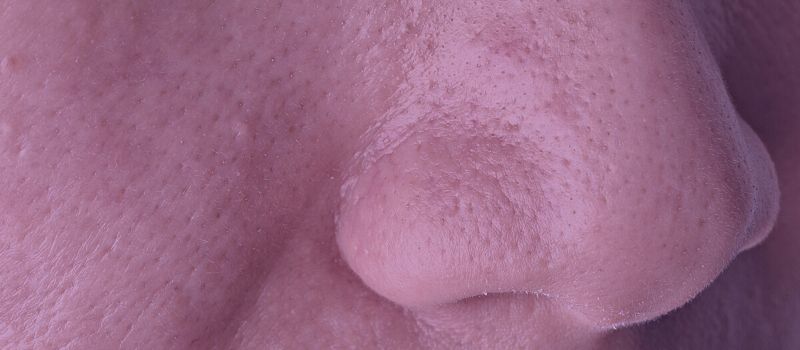
What Causes Closed Comedones?
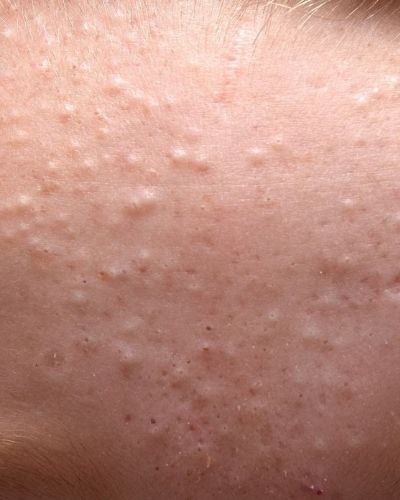
Closed comedones are small, round bumps that form on the skin when a hair follicle becomes plugged with sebum and dead skin cells.
They’re usually not red or discolored, and unlike an inflamed pimple, they don’t have a white head that can be popped or scratched.
However, even though they can’t be popped and appear blind, a closed comedo has a small opening at the top, but we can’t see it with the naked eye.
This makes it different than open comedones, or blackheads, which, similarly, are non-inflammatory acne lesions; however, they have a black surface because the plug of sebum and dead skin cells is oxidized as it’s exposed to oxygen.
As mentioned above, both conditions are non-inflammatory; however, they can turn into a pimple if not treated properly.
This can happen due to an overgrowth of bacteria that feeds on the cellular debris stuck inside the pore and triggers the immune system to fight it by sending white blood cells to the area and causing inflammation.
The result can be an inflamed pimple such as a pustule (with a white head on top), a papule (a blind pimple), or a more severe cyst.
Additionally, another fun fact about them is that both open and closed comedones can turn into a pimple if you try to squeeze them, but you don’t remove the whole plug.
This usually happens when people try to squeeze them but can’t take the pain and leave some leftover material to quite literally fester inside the pore and trigger the immune system into causing an inflammatory reaction that would form a pimple at the spot of what was a non-inflammatory lesion overnight.
How Does Lactic Acid Help to Treat Closed Comedones?
Lactic acid is one of the most effective ingredients for closed comedones.
An alpha-hydroxy acid derived from milk, lactic acid works by dissolving the glue-like substances that hold skin cells together, which helps to loosen and shed dead skin cells from the surface of the skin.
This action will cause the comedo to open and the contents to be dissolved and removed.
Lactic acid also helps stimulate new cell growth and encourages the skin cells from underneath to regenerate, which can help improve the overall appearance of the skin.
Besides being excellent against closed comedones, lactic acid can also help fade hyperpigmentation, smooth out uneven texture, improve sun damage and acne scarring, and make the complexion look more glowy, supple, and uniform.
Lactic acid can be found in over-the-counter products, such as cleansers, toners, and creams. It can also be used by a professional through chemical peels for a more potent and effective dose that works to deeply exfoliate and brighten the skin.
Whether used at home or by a professional, lactic acid is an excellent choice for those looking to target closed comedones.
Best Lactic Acid Serums for Closed Comedones
The Ordinary – Lactic Acid 5% + HA 2%
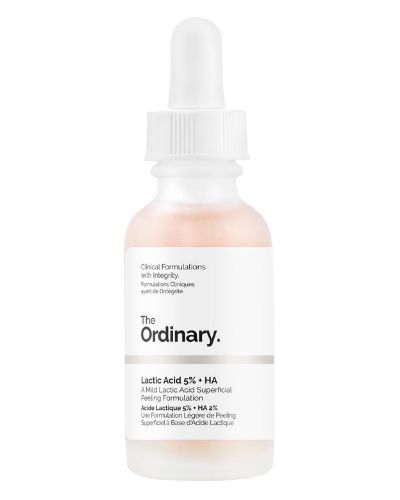
Best for all skin types.
The Ordinary’s Lactic Acid 5% + HA 2% is a simple, gentle, and hydrating serum that contains low concentration of lactic acid to gently exfoliate dead skin cells from the skin’s surface and hyaluronic acid to hydrate and plump the skin.
This combination makes it an excellent choice for all skin types, including oily, sensitive, and acne-prone skin, as it won’t dry out the skin or cause irritation.
REN – Ready Steady Glow Daily AHA Tonic
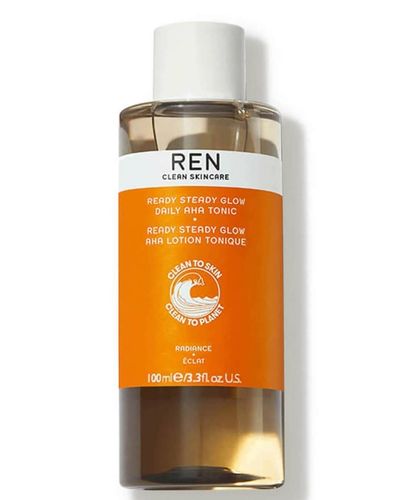
Best for all skin types.
REN’s Daily AHA Tonic is an exfoliating toner that contains a combination of lactic and salicylic acid to brighten the skin’s surface, unclog pores, and reduce the appearance of closed comedones and blemishes.
However, even though this is a gentle combination of low-concentration exfoliating acids, it shouldn’t be used daily as advertised, as it can lead to over-exfoliation, dryness, irritation, and a damaged skin barrier.
Therefore, it’s best to exfoliate twice to three times a week for great results without the risk of damage.
Paula’s Choice – Smoothing Treatment 10% AHA
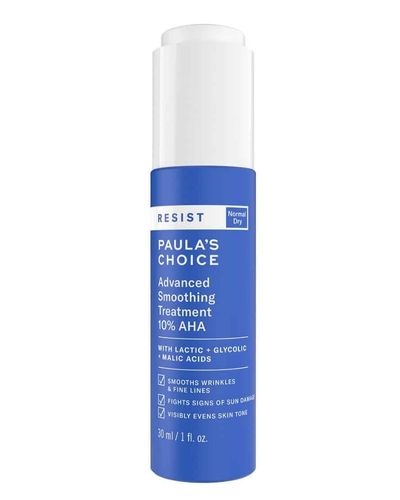
Best for mature skin.
Paula’s Choice Smoothing Treatment 10% AHA is a great treatment for mature skin that’s dealing with blemishes, hyperpigmentation, enlarged pores, and closed comedones.
It contains a blend of several alpha hydroxy acids, including glycolic, lactic, and malic acid and works to rejuvenate the skin, smooth out the complexion, and minimize fine lines and wrinkles.
Biossance – Squalane Lactic Acid Resurfacing Night Serum
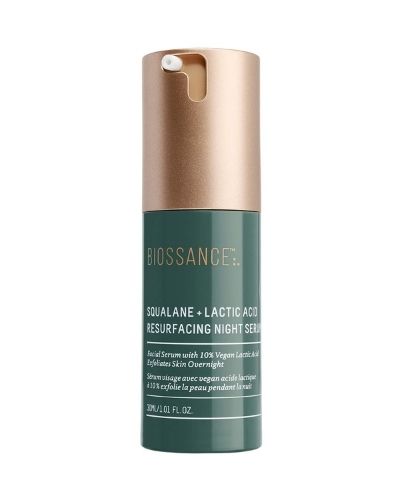
Best for sensitive skin.
Boosted with low percentage lactic acid and barrier-repairing squalane, the Biossance Squalane + Lactic Acid Serum is a great choice for those with sensitive skin who are looking to target closed comedones.
This serum will not only exfoliate dead skin cells from the surface of the skin but also help to hydrate and repair the skin’s barrier, preventing moisture loss and further irritation.
Drunk Elephant – Protini Powerpeptide Resurf Serum
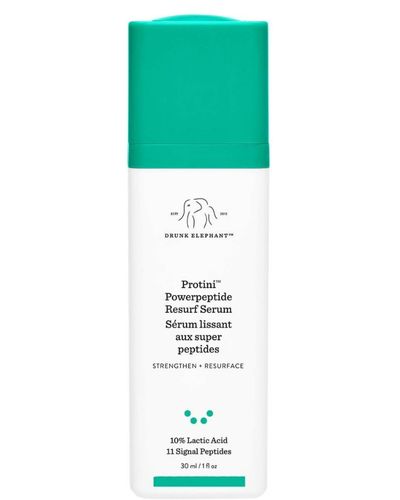
Best for dry skin.
Drunk Elephant’s Protini Powerpeptide Resurf is an excellent lactic acid serum for those who are looking to target multiple skin concerns at once.
Due to exfoliating lactic acid, the serum can help get rid of closed comedones, blemishes, and hyperpigmentation, while cell-communicating ingredients like peptides help improve the overall appearance of the skin by boosting collagen production and smoothing out fine lines and wrinkles.
However, due to the addition of emollients and oils that could potentially be problematic for oily skin, the Protini Powerpeptide Resurf is best suited for those with dry skin.

My name is Simone and I am a certified skin specialist. I created this website to teach my readers how to take great care of their skin and I also like to occasionally share my honest opinions on skincare products I’ve tried. You can learn more about me here.
